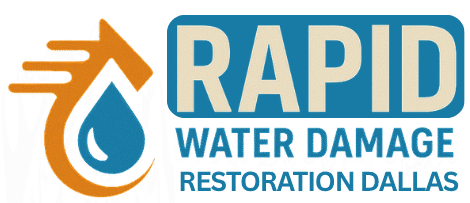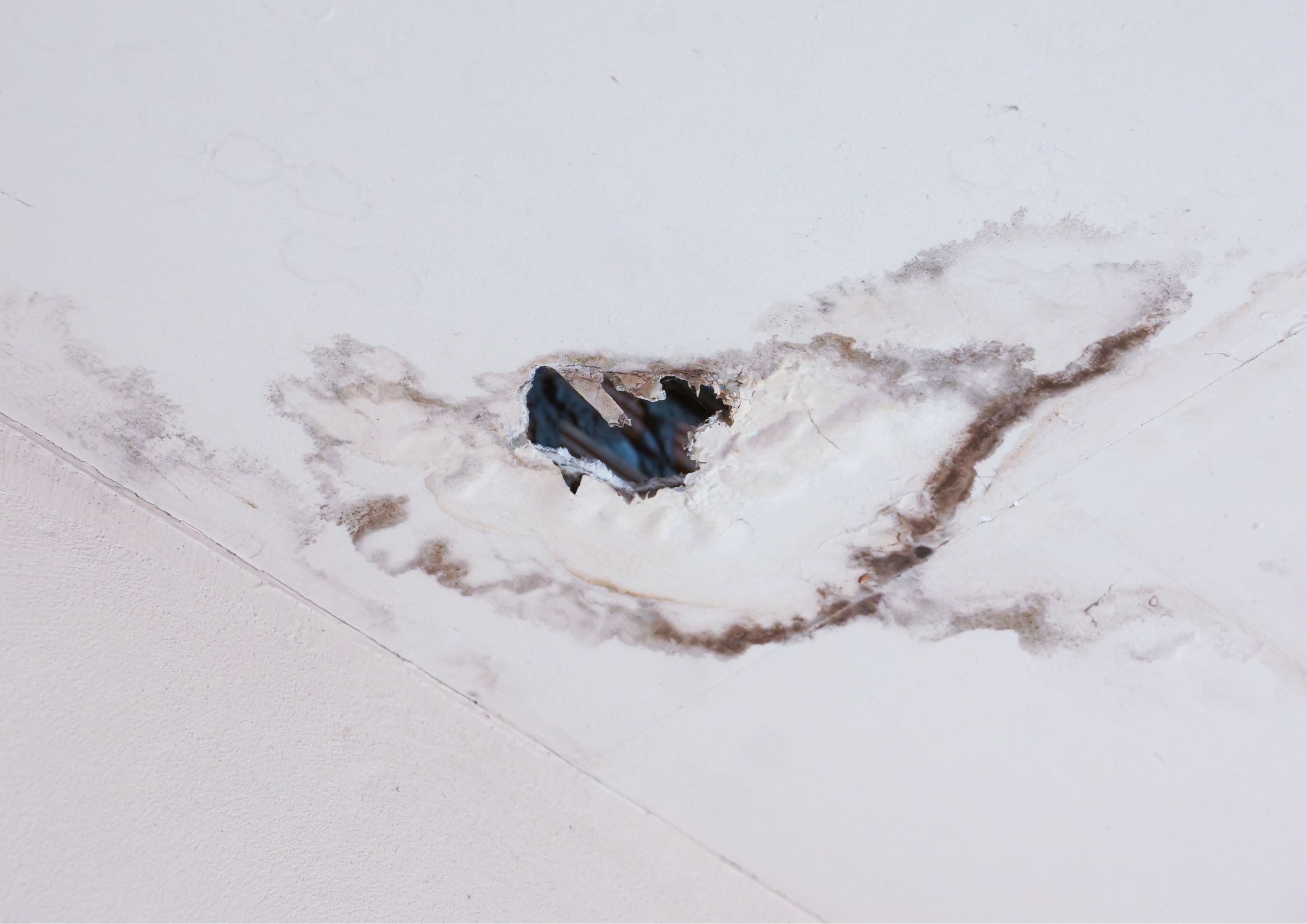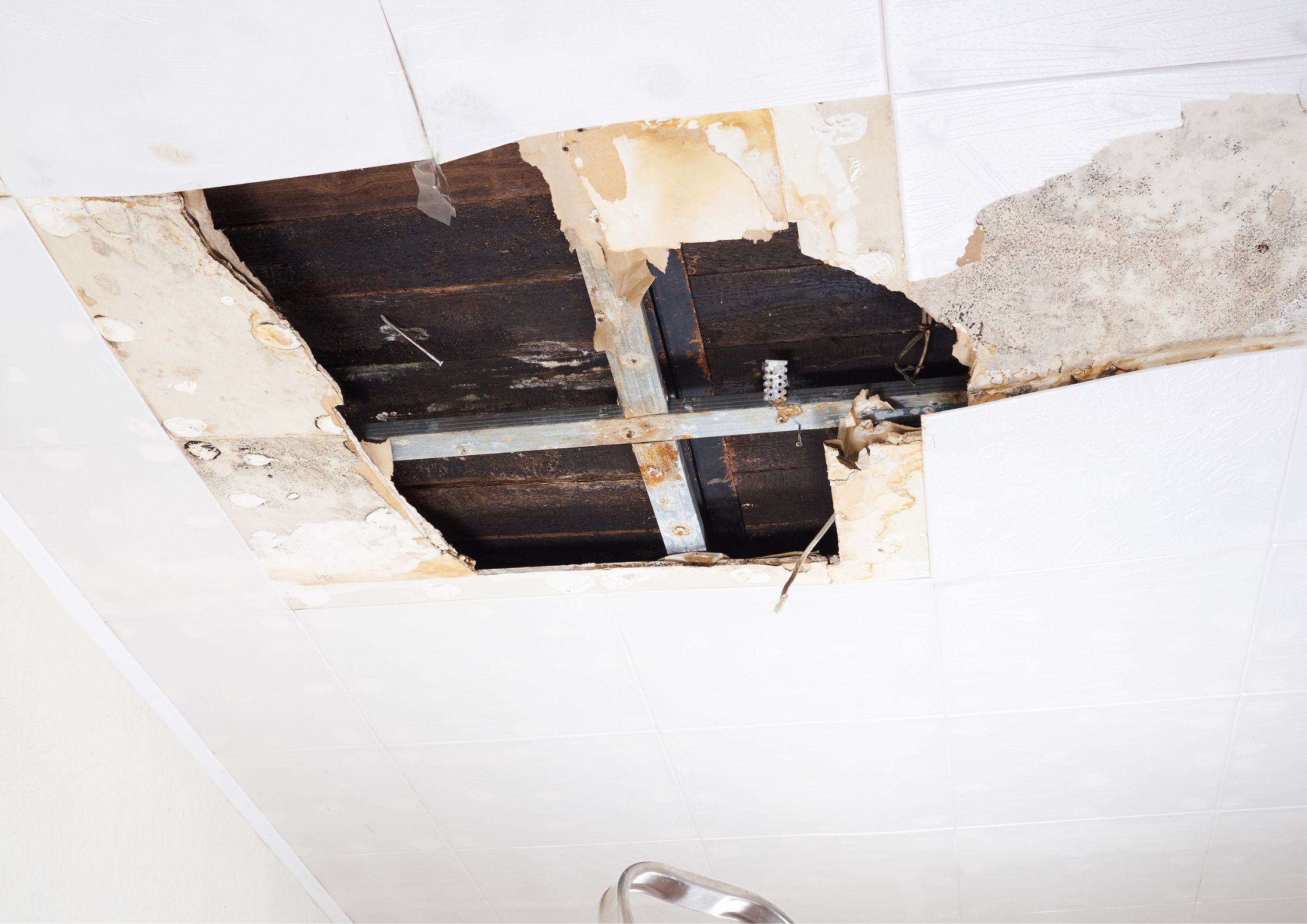Ceiling water damage isn’t just unsightly—it can indicate bigger problems that may lead to expensive repairs if not addressed early. Recognizing the warning signs allows you to act quickly and protect your home. This guide will help you identify common signs of ceiling water damage, understand the causes, and take effective steps to prevent further issues.
Why Early Detection Is Important
Water damage spreads quickly and can weaken your ceiling, promote mold growth, and compromise the safety of your home. Detecting problems early makes repairs easier, faster, and more affordable.
Common Signs of Ceiling Water Damage
Knowing what to look for can save you time and money. Watch for these indicators:
1. Brown or Yellow Water Stains
- Appearance: Discolored patches or rings on the ceiling.
- Cause: Water seeping through drywall or plaster, often from a roof leak or plumbing issue.
- Action: Identify the source and repair it immediately to prevent further damage.
2. Bubbling or Peeling Paint
- Appearance: Paint that blisters, bubbles, or peels off the ceiling.
- Cause: Moisture trapped under the paint layer.
- Action: Remove damaged paint, dry the area completely, and repaint only after fixing the leak.
3. Musty Odors
- Appearance: Persistent damp or earthy smells near the ceiling.
- Cause: Mold or mildew growth caused by trapped moisture.
- Action: Inspect for hidden leaks and address both the odor and the moisture source.
4. Sagging or Soft Spots
- Appearance: Areas of the ceiling that droop, bulge, or feel soft to the touch.
- Cause: Water weakens drywall and ceiling supports over time.
- Action: Repair immediately, as sagging ceilings can be a safety hazard.
Common Causes of Ceiling Water Damage
Understanding the causes can help prevent future issues:
- Roof Leaks: Damaged shingles, flashing, or clogged gutters allow rainwater to seep in.
- Plumbing Leaks: Burst or leaking pipes can drip into ceilings from above.
- HVAC Condensation: Moisture from air conditioning units or ductwork can accumulate unnoticed.
- Appliances Above Ceilings: Washing machines, dishwashers, or other appliances can leak slowly.
Learn more about causes and prevention in our guide on common causes of ceiling water damage.
Risks of Ignoring Ceiling Water Damage
Delaying repairs can result in serious consequences:
- Mold Growth: Can spread quickly and harm air quality.
- Structural Weakness: Water can damage beams, joists, and drywall.
- Electrical Hazards: Moisture near wiring increases risk of shorts or fire.
- Higher Repair Costs: Minor issues can become major repairs if left untreated.
Steps to Take If You Notice Damage
Prompt action can prevent the problem from worsening:
- Locate the Source: Determine if the water comes from plumbing, the roof, or HVAC systems.
- Stop the Water Flow: Turn off water supply if plumbing is the cause. Use temporary measures like tarps for roof leaks.
- Dry the Area: Use fans, dehumidifiers, and proper ventilation.
- Remove Damaged Materials: Discard any drywall, insulation, or paint that cannot be salvaged.
- Schedule Repairs: Fix the source of the leak and restore the ceiling to prevent recurrence.
When to Call Professionals
Some cases require expert intervention, especially if damage is extensive. If you see sagging ceilings, widespread stains, or recurring leaks, professional repair is the safest option. Learn more about ceiling water damage repair and how experts can restore your home efficiently.
Preventing Future Ceiling Water Damage
Take these preventive measures to protect your ceiling:
- Inspect and maintain your roof regularly.
- Keep gutters and downspouts clean to prevent overflow.
- Service plumbing and HVAC systems annually.
- Install leak detectors near appliances and water heaters.
- Address small leaks promptly before they escalate.
Conclusion
Early detection of ceiling water damage protects your home’s structure, air quality, and belongings. Watch for stains, peeling paint, odors, and sagging areas, and act quickly to resolve any issues. Addressing leaks promptly prevents costly repairs and keeps your home safe and comfortable.
If you notice signs of ceiling water damage, explore our ceiling water damage repair services or contact us for professional assistance.





